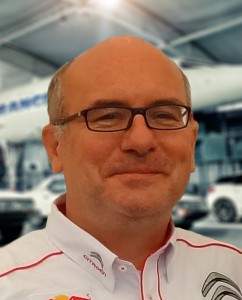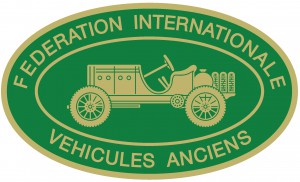
(English below)
Die Pressemitteilung des ADAC:
Vielen modernen Klassikern, die seit Mitte der 1980er Jahre hergestellt wurden, steht eine ungewisse Zukunft bevor, wenn es der Branche nicht gelingt, die Technologie dieser Fahrzeuge – der sogenannten “digitalen Generation” – zu bewahren.
Der FIVA (Weltverband der Oldtimerclubs und -verbände) ist es ein Anliegen, diese sehr reelle Gefahr ins öffentliche Bewusstsein zu rücken, bevor es zu spät ist. Vereinzelte Initiativen machen bereits gewisse Fortschritte. Eine nachhaltige Lösung wird jedoch voraussichtlich nur mit Unterstützung der Industrie und einer konzertierten Aktion von Oldtimerliebhabern, Clubs und Organisationen wie der FIVA gelingen.
Dieser Meinung ist auch Stephan Joest, Experte für elektronische Bauteile und Präsident von Amicale Citroën Internationale, dem weltweiten Netzwerk von über 1.000 Citroën-Clubs. “Wir haben gegenwärtig die einmalige Gelegenheit, vorhandene Bestände an elektronischen Bauteilen und deren digitalen Quellcode zu bewahren.”, erklärt er. “Wenn nicht, laufen wir Gefahr, die Steuergeräte nicht mehr ersetzen zu können, die in Klassikern ab Mitte der 1980er Jahre typischerweise alles steuern – vom Motormanagement über die Klimaanlage bis hin zur Sicherheitsausstattung.
Die digitale Alterung, d.h. die physische Alterung elektronischer Bauteile, findet unabhängig von der Benutzung des Bauteils statt. Laut einer alarmierenden Statistik sind rund 50% der Steuergeräte ab einem Alter von 40 Jahren bereits bei Erhalt defekt („dead on arrival“), d.h. sie funktionieren schon beim Einbau unmittelbar nach dem Auspacken nicht mehr. Je älter das elektronische Bauteil, desto schwieriger ist es, einwandfreien Ersatz zu finden”, meint Joest und betont, dass dies kein markenspezifisches Problem sei, sondern die gesamte Branche betreffe.
Bosch hat die jüngeren historischen Fahrzeugen drohende Gefahr erkannt und arbeitet an einer Lösung. “Die Herausforderung, klassische Fahrzeuge am Laufen zu halten, ist bei den künftigen Generationen größer denn je.”, bestätigt Dipl.-Ing. Fritz Cirener, Leiter BOSCH Automotive Tradition. “Wir arbeiten gemeinsam mit den Herstellern an diesem Thema. Vor uns liegt noch ein weiter Weg. Wenn wir aber die Technologie für die jüngeren und künftigen Nutzergenerationen bewahren wollen, lohnt sich der Einsatz.”
Wie Stephan Joest betont, wird die Herausforderung eher noch größer werden. „Heutige Premiumfahrzeuge haben etwa 60-100 separate elektronische Steuergeräte, die jeden Aspekt des Fahrzeugs steuern – und die Software wird von Jahr zu Jahr komplexer. Neben dem akuten Bedarf, die Langlebigkeit von Fahrzeugen ab den 1980ern bis zur Jahrtausendwende sicherzustellen, müssen wir auch dafür sorgen, dass unsere heutigen Fahrzeuge in 30 Jahren noch eine Zukunft haben. Darauf sind wir gegenwärtig nicht ausreichend vorbereitet.
“Wir müssen jetzt handeln, um das technische Kulturgut der ‘digitalen Fahrzeuggeneration’ zu bewahren und sicherzustellen, dass die Oldtimer der Zukunft ihr Dasein nicht einfach als statische Ausstellungsobjekte fristen müssen, sondern lebendige Kulturgüter bleiben können” , resümiert Joest.
Die FIVA wird dieses wichtige Thema als Tagesordnungspunkt für das FIVA-Kulturgutforum 2016 Anfang September vorschlagen. Zu diesem Forum in Chantilly treffen sich die Leiter der Traditionsabteilungen der führenden Automobilhersteller, um über die gemeinsamen Herausforderungen und Chancen zu diskutieren.
Hinweis: Für den Inhalt der Meldung ist ausschließlich die FIVA verantwortlich. Die Übersetzung vom englischen Originaltext ins Deutsche erfolgte durch den ADAC e.V.
Über die FIVA:
Die FIVA (Fédération Internationale des Véhicules Anciens) widmet sich dem Schutz, der Förderung und der Erhaltung des Automobilen Kulturgutes. Die FIVA repräsentiert weltweit die Interessen von über 1,5 Mio. Oldtimerbesitzern in 64 Ländern. Anlässlich des 50-jährigen Bestehens des im Jahre 1966 gegründeten Oldtimer-Weltverbandes, hat die UNESCO die Schirmherrschaft für das von der FIVA ausgerufene Internationale Jahr des Automobilen Kulturgutes (FIVA World Motoring Heritage) übernommen.
In Deutschland sind der Allgemeine Schnauferl-Club e.V. (ASC), der Deutsche Automobil-Veteranen-Club e.V. (DAVC) und das Ressort Klassik des Allgemeinen Deutschen Automobil-Clubs e.V. (ADAC) Mitglied der FIVA.
Weitere Infos und Tipps rund um historische und klassische Fahrzeuge erhalten Sie unter www.adac.de/klassik. Abonnieren Sie den regelmäßig erscheinenden elektronischen ADAC Oldtimer-Newsletter unter www.adac.de/newsletter und bleiben Sie über die Entwicklungen in der Klassik-Szene stets informiert.
Kontakt für Anregungen und Fragen:
ADAC e.V., Klassik Interessenvertretung
Hansastraße 19, 80686 München
email: klassik@adac.de
—–
Preserve the ‘digital generation’ of classic vehicles
The press release by FIVA:
Many modern classics built after the mid-1980s face an uncertain future, unless the industry can safeguard the technology behind these vehicles – the so-called ‘digital generation’.
FIVA (the international federation of historic vehicles) is keen to draw public attention to this very real threat, before it’s too late. Already, a number of isolated initiatives are making progress, but a sustainable solution is likely to require industry support, alongside concerted action by enthusiasts, clubs and organizations such as FIVA.
Stephan Joest, a consultant in electronic vehicle components and also president of Amicale Citroën Internationale, the network of 1,000-plus Citroën car clubs worldwide, agrees. “We currently have a clear window of opportunity when it’s still possible to preserve existing stocks of electronic components and their digital ‘source codes’,” he explains. “Otherwise, we risk finding ourselves unable to replace the ECUs (electronic control units) that – in classics from the mid-1980s onward – typically control everything from engine management to air-conditioning and safety equipment.
“Digital aging – the physical aging of electronic components – takes place whether or not the component is in use, and a startling statistic is that around 50% of 40-plus-year-old ECUs are ‘dead on arrival’, i.e. not in working order when installed freshly out of the box. The older the electronic unit, the harder it will be to find replacement units that still work,” says Joest, stressing that this is not a problem specific to any particular marque, but one that’s endemic across the industry.
Bosch is one organization that has recognized the impending threat to younger historic cars and is working towards a solution. “To keep upcoming generations of classic cars running will be more challenging than in the past,” confirms Dipl.-Ing. Fritz Cirener, head of Automotive Tradition at Robert Bosch GmbH. “Together with the manufacturers, we are working on this topic. There’s a long way to go but it will be worth it, if we want to preserve the technology for the younger and future user generations.”
Stephan Joest points out that the challenge is only going to get bigger. “The premium cars of today have some 60-100 separate ECUs, controlling every aspect of the car – and the complexity of the software is increasing every year. While the immediate need is to protect the longevity of vehicles from the 1980s to the end of the millennium, we also need to ensure that there is a future for today’s vehicles, 30 years from now. Currently, we are not sufficiently prepared.
“We need to act now to safeguard the technical heritage of the ‘digital generation’ of vehicles, and ensure that classic automobiles of the future don’t have to be simply static objects in showrooms, but can remain as lively cultural assets,” concludes Joest.
FIVA will be suggesting that this important topic is added to the agenda of the 2016 FIVA Heritage Forum at Chantilly, in early September, where the heads of the major motor manufacturer heritage departments meet to discuss common challenges and opportunities.
FIVA (Fédération Internationale des Véhicules Anciens) is dedicated to the protection, promotion and preservation of world motoring heritage.
FIVA is present in 64 countries and represents the interests of over 1,500,000 historic vehicle owners worldwide.
In 2016, FIVA received the patronage of UNESCO for its World Motoring Heritage Year in celebration of the 50th anniversary of the founding of the organization in 1966.
For more information visit: fiva.org





